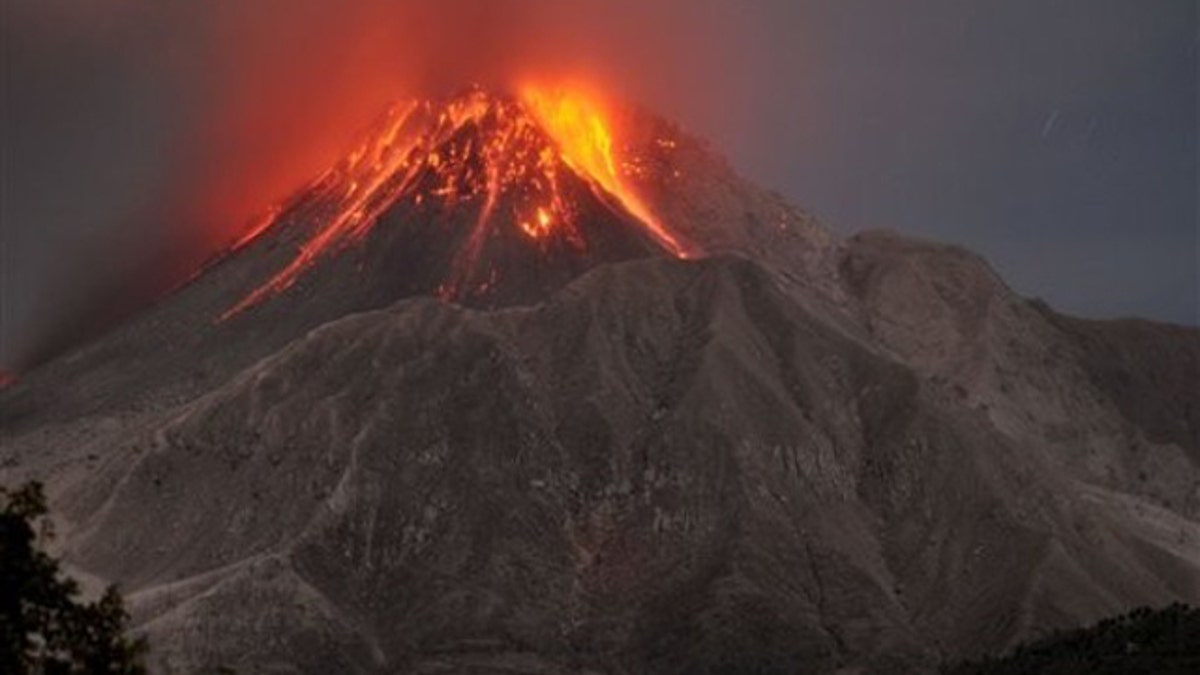
The Soufriere Hills volcano erupts in the Caribbean island of Montserrat, Saturday, Jan. 23, 2010. (AP Photo/Wayne Fenton)
Dinosaurs first came to be 200 million years ago after volcanic eruptions killed off their rivals, long before the giant creatures were wiped from the face of the Earth by a meteorite.
A climatic catastrophe that saw an abrupt rise in atmospheric gases, coupled with powerful volcanic eruptions decimated crurotarsans, creatures closely related to today's crocodiles, according to a study led by Brown University paleobiologist Jessica Whiteside.
The paper, published in the Proceedings of the National Academy of Sciences, was the first to make the link between volcanic activity, climate change and the widespread extinction of a specific animal species.
Scientists gathered fossil evidence of plant and animal extinctions, along with the carbon signature found in the wax of ancient leaves and wood in lake sediments intermixed with basalt that marked the volcanic activity.
Through their research, they found that huge volcanic eruptions throughout the planet increased the amount of carbon dioxide and other greenhouse gases in the atmosphere, wiping out half of plant species and marking the end of the Triassic period, one of five great mass extinctions of Earth's history.
More than 200 million years ago, the supercontinent Pangea broke up as the North American and African plates began drifting apart. During their separation, the plates created a basin that eventually became the Atlantic Ocean while fissures cleaved the area.
Massive outflows of lava ensued, covering over 3.5 million square miles, an area about the size of the continental United States. The volcanic eruptions lasted about 600,000 years.
But the reasons underlying dinosaurs' survival, diversification and massive size for 160 million years while their crurotarsan foes did not evolve in a similar fashion remains a "mystery," Whiteside told AFP.
One of the main hypotheses is that they were somehow physiologically superior to the crutotarsans, she added. "The truth is that nobody really knows, it just happened at the right place at the right time."
She said it was a "very complicated" situation similar to the mass extinction and disappearance of dinosaurs when a meteorite fell on Earth, paving the way for the ecological stage during which mammals ruled.
Researchers questioned the theory of dinosaurs' physiological superiority in a study published in the journal Science in 2008.
That team of scientists, which included Stephen Brusatte of Columbia University in New York, compared the evolution of dinosaurs to that of crurotarsans -- both shared a similar lifestyle.
In analyzing the characteristics of the two species' skeletons, the palaeontologists found the crurotarsans had evolved at a similar rate as dinosaurs, who were not superior except for having evolved slightly more rapidly.
The researchers also found that there were more varieties of crurotarsans, who were also more numerous and more adapted than dinosaurs, and thus had greater chances of prospering and ruling on Earth.
So dinosaurs were not particularly special -- rather, they were simply lucky, according to Brusatte.
